1. What are Comb Jellies?
Comb jellies, also known as ctenophore Mnemiopsis leidyi, can defy age and revert to younger versions of themselves, according to a study published recently.
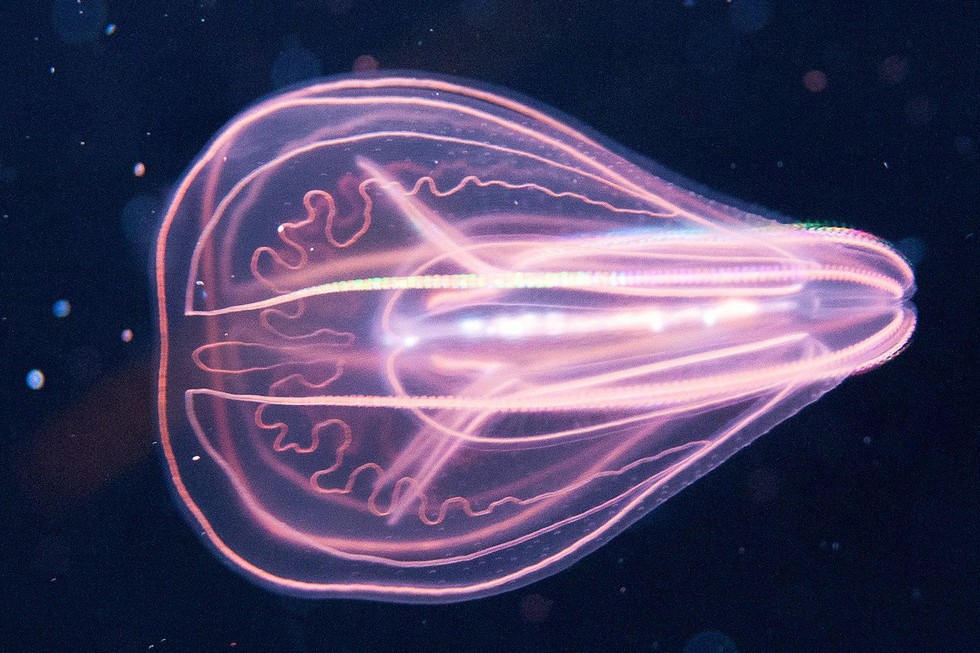
About Comb Jellies:
- They are transparent, gelatinous invertebrates that drift through the waters of our global ocean.
- They are one of the oldest multicellular phyla in the animal kingdom, probably existing already more than 500 million years.
- There are between 100 and 150 known species of comb jellies, the best known of which are found close to shore.
- Description:
- They are colorful, simple invertebrates that are part of the family Ctenophora.
- Each species varies in length, but the average size of a comb jelly is about four inches long.
- Comb jellies get their name from their eight rows of plates made of fused cilia (little hairs) that they use to move through the water, which looks like combs.
- They are the largest animals known to use cilia for locomotion.
- They have two large, trailing tentacles that branch out to create the appearance of a net-like structure of many tentacles.
- These organs serve as sticky fishing lines, which they use to trap and move prey to their bodies.
- These animals have two major cell layers, the external epidermis and internal gastrodermis; in between these cell layers is the mesoderm which is what gives the animals their gelatinous appearance.
- Many species are bioluminescent, meaning they can use proteins in their bodies to create an ethereal blue or green glow in response to stimuli like touch.
- Comb jellies are carnivorous and opportunistic, feeding on whatever passes them by.
- Unlike their close relative, the jellyfish, comb jellies do not have stinging tentacles and are harmless to humans.
2. What is the Foreign Contribution (Regulation) Act, 2010?
The Union Ministry of Home Affairs has, for the first time, explicitly listed the reasons for denying the clearance needed under the Foreign Contribution Regulation Act to receive funds from abroad.

About Foreign Contribution (Regulation) Act, 2010:
- It is a law enacted by Parliament to regulate foreign contributions(especially monetary donations) provided by certain individuals or associations to NGOs and others within India.
- The FCRA was originally enacted in 1976 and significantly revised in 2010.
- The Act falls under the purview of the Ministry of Home Affairs (MHA).
- ‘Foreign Contribution’ means the donation, delivery, or transfer made by any foreign source of any:
- Any article(not being an article given to a person as a gift for his/her personal use, the market value of which is not more than one lakh rupees);
- Any currency, whether Indian or foreign.
- Any security, including foreign security.
- This will also cover:
- Contribution received from any person who has in turn received it from a foreign source.
- Interest accrued on foreign contributions deposited in the bank
- It creates registration requirements and spending restrictions on Indian nonprofit organizations receiving foreign donations.
- It aims to prevent foreign organisations from influencing electoral politics, social, political, economic, or religious discussions in India for wrong purposes and activities detrimental to the public interest.
- Contributions made by a citizen of India living in another country (e.g., a Non-Resident Indian (NRI)) from his/her personal savingsthrough the normal banking channels, will not be treated as foreign contributions.
- Who can Receive Foreign Contributions? Any person can receive a foreign contribution provided:
- The person has a definite cultural, economic, educational, religious, or social programme;
- The person must have obtained FCRA registration/prior permission from the Central Government and
- Person includes
- an individual;
- a Hindu Undivided Family;
- an association;
- a company registered under Section 8 of the Companies Act, 2013;
- The foreign contribution received has to be utilised only for the purposefor which it has been received, and not more than 20% of the foreign contribution received in a financial year can be utilised to defray administrative expenses.
- The FCRA requires every person or NGO seeking to receive foreign donations to open a bank account for the receipt of foreign funds in the State Bank of India, Delhi.
- Registration under FCRA: The FCRA applies to all associations, groups and NGOs which intend to receive foreign donations.
- It is mandatory for all such NGOs to register themselves under the FCRA.
- The applicant should not be fictitious or benamiand should not have been prosecuted or convicted for indulging in activities aimed at conversion through inducement or force, either directly or indirectly, from one religious faith to another.
- The registration is initially valid for five years, and it can be renewed subsequently if it complies with all norms.
- Registered associations can receive foreign contributions for social, educational, religious, economic, and cultural purposes.
- Registration can be cancelled if an inquiry finds a false statement in the application.
- Once the registration of an NGO is cancelled, it is not eligible for re-registration for three years.
- The ministry also has the power to suspend an NGO’s registration for 180 days pending inquiry and can freeze its funds.
- All orders of the government can be challenged in the High Court.
3. HAWK Missile
It is up to the United States to decide what to do with Taiwan's decommissioned HAWK anti-aircraft missiles, the island's Defence Minister said recently.
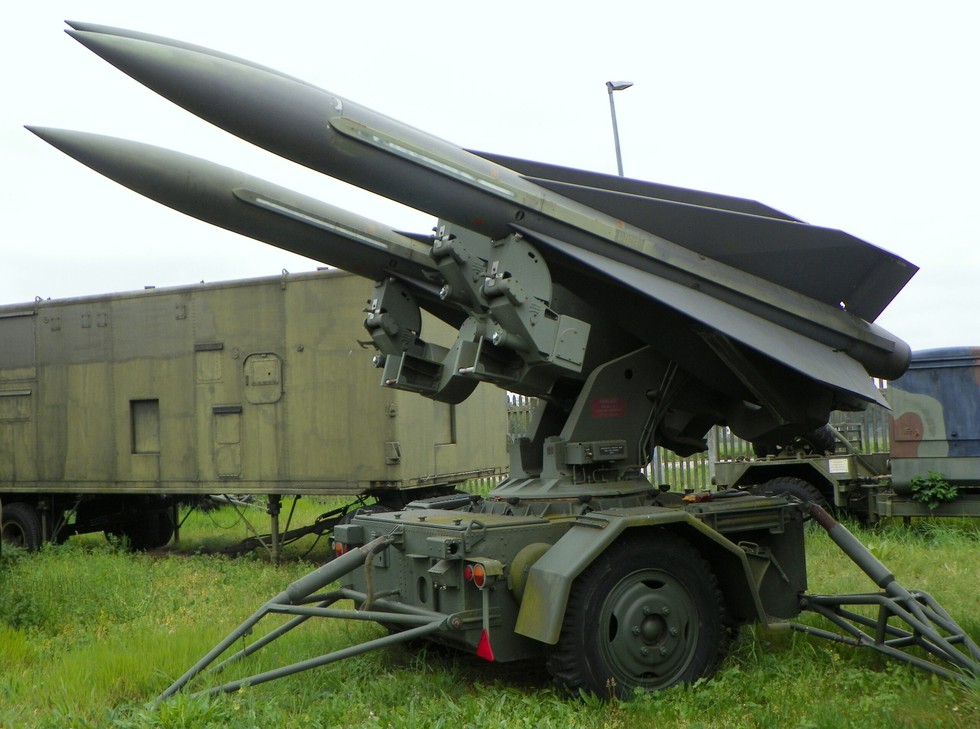
About HAWK Missile:
- The HAWK (Homing All the Way Killer) MIM-23 is an all-weather low-to medium-altitude ground-to-air missile system.
- It was developed and designed by the American Defence Company, Raytheon.
- It was initially designed to destroy aircraft and was later adapted to destroy other missiles in flight.
- The missile entered service in 1960, and a program of extensive upgrades has kept it from becoming obsolete.
- It was superseded by the MIM-104 Patriot in United States Army service by 1994.
- It was finally phased out of US service in 2002, with the last user, the US Marine Corps, replacing it with the man-portable IR-guided visual range FIM-92 Stinger.
- The HAWK missile system has been widely exported and is still used by various countries globally, including NATO allies and countries in Asia and the Middle East.
- It employs a Semi-Active-Radar-Homing (SARH) guidance system.
- The Hawk missile is transported and launched from the M192 towed triple-missile launcher and is propelled by a dual-thrust motor, with a boost phase and a sustain phase.
- The HAWK can engage multiple targets simultaneously and is effective in a variety of weather conditions.
- However, it is generally considered outdated compared to more modern systems like the Patriot missile defense system.
4. What is Voyager 2 Spacecraft?
Nearly four decades after NASA's Voyager 2 spacecraft made its historic flyby of Uranus, scientists have uncovered new revelations about the ice giant's peculiar magnetic field.
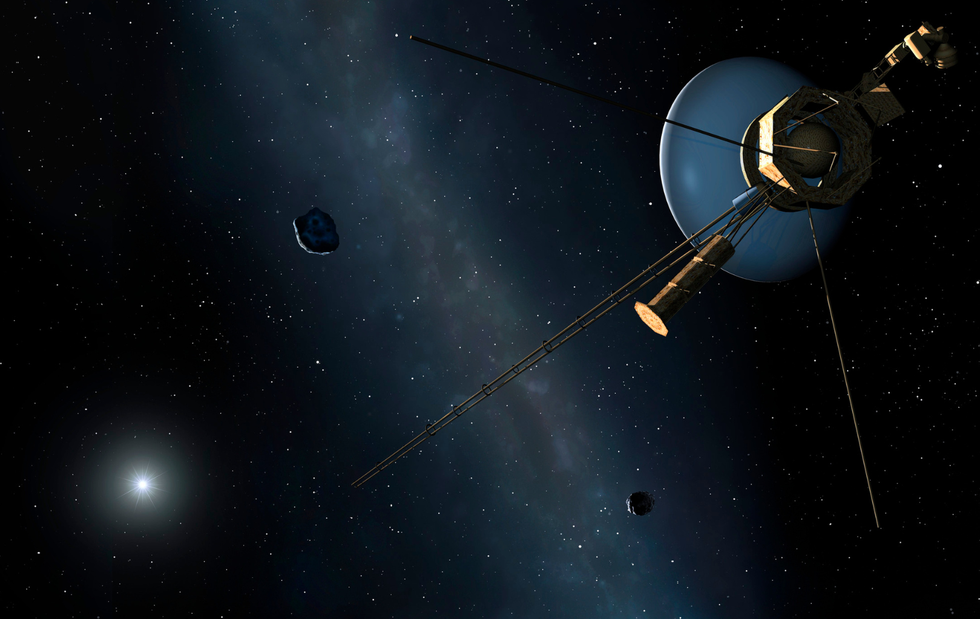
About Voyager 2 Spacecraft:
- It is an unmanned space probe launched by NASA on August 20, 1977, just a few weeks before its sister craft, Voyager 1.
- Primary mission:Its mission was to study the outer planets of our solar system, including Jupiter, Saturn, Uranus, and Neptune and their moons, and then continue on an interstellar mission.
- It is the only spacecraft to have ever visited Uranus and Neptune.
- It carries a Golden Record, a phonograph record containing sounds and images from Earth, intended to be a message to any potential extraterrestrial civilizations it might encounter in the future.
- Firsts:
- It is the only spacecraft to study all four of the solar system's giant planets at close range.
- It discovered a 14th moon of Jupiter.
- It was the first human-made object to fly past Uranus.
- At Uranus, Voyager 2 discovered 10 new moons and two new rings.
- It was the first human-made object to fly by Neptune.
- At Neptune, Voyager 2 discovered five moons, four rings, and a "Great Dark Spot."
- After completing its primary mission, Voyager 2 continued on its journey into interstellar space, where it is still sending back data on the interstellar medium and the heliosphere.
- It is the second spacecraft to enter interstellar space. On Dec. 10, 2018, the spacecraft joined its twin—Voyager 1—as the only human-made objects to enter the space between the stars.
- It is currently the second most distant human-made object from Earth, after Voyager 1.
5. Sahyadri Tiger Reserve
In a boost for wildlife enthusiasts and tourists, a new tiger has been spotted in the renowned Sahyadri Tiger Reserve in Maharashtra.
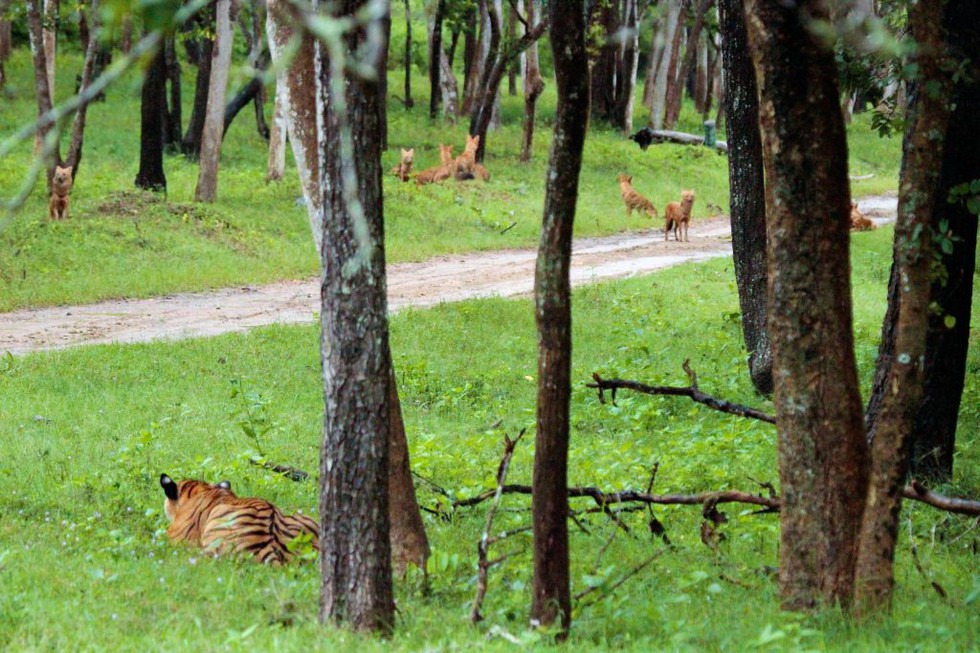
About Sahyadri Tiger Reserve:
- Location: It is located in the Sahyadri Ranges of the Western Ghats in Maharashtra.
- It is the northernmost tiger habitat in the western ghats, with an area of almost 741.22 sq. km.
- The reserve spreads over Koyna Wildlife Sanctuary, forming the northern portion, and Chandoli National Park, forming the southern part of the reserve. STR was created by merging the areas of these two forests in 2007.
- The central portion of Sahyadri Tiger Reserve is occupied by the "Shivsagar" reservoir of the Koyana River and the "Vasant Sagar" reservoir of the Warana River.
- History:
- The history of the area dates back to the Maratha Empire, and many forts built or captured by the first Maratha Emperor Shivaji Bhonsle can be found here.
- The legendary temple from which Shivaji received the Bhavani Sword from divine providence is also said to be among the many ruins in this region.
- Habitat:
- The total area of STR is undulating, with steep escarpments along the western boundary.
- The most distinct feature is the presence of numerous barren rocky and lateritic plateaus, locally called “Sadas”, with less perennial vegetation and overhanging cliffs on the edges, along with numerous fallen boulders with dense thorny bushes.
- STR is the only place where climax and near-climax vegetation are plentiful and prospects of adverse anthropogenic influence in the future are minimal.
- Flora:
- The forest cover here is that of moist evergreen, semi-evergreen, moist and dry deciduous vegetation.
- There are many medicinal and fruit-bearing trees along with the commercial hardwood trees in the reserve.
- The most common floral species found here are Anjani (Memecylon umbellatum), Jambhul (Syzygium cumini), and Pisa (Actinodaphaone Angustifolia).
- Fauna:
-
- The main carnivores are the tiger, leopard, and some lesser cats along with the wolf, jackal, and wild dog.
- The large herbivores are several deer species like Barking Deer, Sambar, and other large and small animals like Indian Bison, Sloth Bear, Mouse Deer, Giant Indian Squirrel, and Macaque.
6. Inter-State Council
Recently, the Union government reconstituted the Standing Committee of the Inter-State Council (ISC) and named the Home Minister as its chairman.

About Inter-State Council:
- It is established under Article 263 of the Constitution of India to facilitate coordination and cooperation between the central government and the state governments.
- The formation of a permanent Inter-State council was supported by the Sarkaria Commission.
- The Inter-State council can be set up by the President If at any time it appears to the President that the establishment of such a council would be in the public interest. In 1990, the first such body was established by the presidential order.
- The Council consists of;
- Chairman: Prime Minister
- Members: Chief Ministers of all States
- Chief Ministers of Union Territories having a Legislative Assembly and Administrators of UTs not having a Legislative Assembly – Members
- Six Ministers of Cabinet rank in the Union Council of Ministers to be nominated by the Prime Minister – Members
- The Council is charged with the duty of:
- Inquiring into and advising upon disputes which may have arisen between States.
- Investigating and discussing subjects in which some or all of the States, or the Union and one or more of the States, have a common interest.
- Making recommendations upon any such subject and particularly recommendations for the better coordination of policy and action.
7. NISAR Satellite
ISRO and NASA are planning to launch a new satellite called NISAR in early 2025 that will help keep track of Earth's surface on land and ice-covered areas.
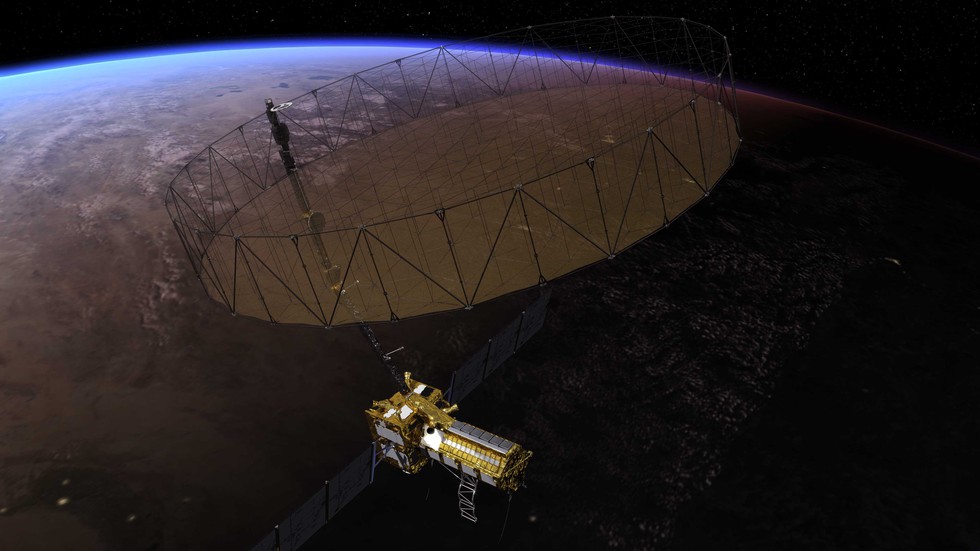
About NISAR Satellite:
- It is a Low Earth Orbit (LEO) observatory jointly developed by NASA and ISRO.
- It will be launched by using ISRO’s Geosynchronous Satellite Launch Vehicle Mark-II rocket.
- It consists of both L-band and S-band Synthetic Aperture Radar (SAR) instruments, which makes it a dual-frequency imaging radar satellite.
- NISAR will be the first satellite mission to use two different radar frequencies(L-band and S-band) to measure changes in our planet's surface.
- It is capable of penetrating clouds and can collect data day and night regardless of the weather conditions.
- NASA has provided the L-band radar, GPS, a high-capacity solid-state recorder to store data, and a payload data subsystem. ISRO has provided the S-band radar, the GSLV launch system, and spacecraft.
- It also consists of a large 39-foot stationary antenna reflector made of a gold-plated wire mesh which will be used to focus “the radar signals emitted and received by the upward-facing feed on the instrument structure.
- Objectives:
- It will measure Earth’s changing ecosystems, dynamic surfaces, and ice masses, providing information about biomass, natural hazards, sea level rise, and groundwater.
- NISAR will observe Earth’s land and ice-covered surfaces globally with 12-day regularity on ascending and descending passes.
- The satellite will observe movements from earthquakes, ice sheet movements, landslides and volcanic activity, track changes in forests, wetlands and farmland and even check infrastructure stability.
- The NISAR mission will also benefit researchers focused on volcanic activity by helping track surface bulging or sinking caused by magma movement. This data will contribute to understanding volcanic behaviours and determining if such deformations hint at imminent eruptions.
8. Gotti Koya Tribe
Recently, the National Commission for Scheduled Tribes has asked the Union Home Ministry and Chhattisgarh, Maharashtra, Andhra Pradesh and Odisha to submit a detailed report on the status of the Gotti Koya tribals.
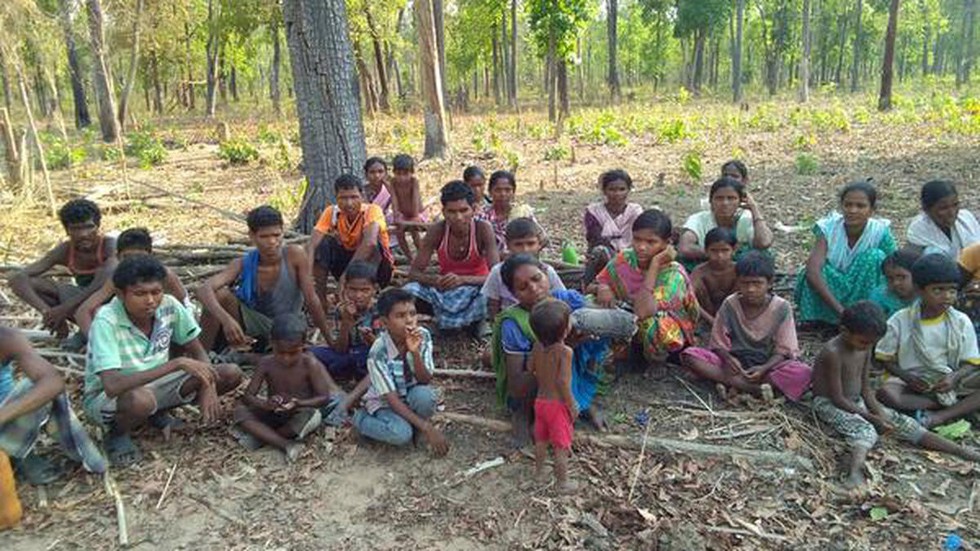
About Gotti Koya Tribe:
- They are one of the few multi-racial and multi-lingualtribal communities in India.
- The Koya population is concentrated in Telangana, Andhra Pradesh, Chhattisgarh and Odisha.
- Language: They speak Koya, which is a Dravidian language. It is closely related to Gondi and has been strongly influenced by Telugu.
- Occupation:
- They practice Podu form of shifting cultivation, as practiced by various tribal groups in forest areas has for long been an economic survival versus environmental sustenance issue.
- They earn a living through animal husbandry and minor forest produce.
- Festival: The most important fair celebrated by Koyas is the Sammakka Saralamma Jatraonce in two years on the full moon day of the Magha Masam (January or February) at Medaram village in Mulug taluk of Warangal district.
- They held ST status in Chattisgarh but they were not granted ST status in their migrated states such as Telangana.
- Society and Culture
- All Koya belong to one of five sub-divisions called gotrams. Every Koya is born into a clan, and he cannot leave it.
- The Koyas have a patrilineal and patrilocal family. The family is called "Kutum". The nuclear family is the predominant type.
- Monogamy is prevalent among the Koya
9. Long Range Land Attack Cruise Missile
Recently, the Defence Research and Development Organisation (DRDO) successfully conducted the maiden flight test of its Long Range Land Attack Cruise Missile (LRLACM).
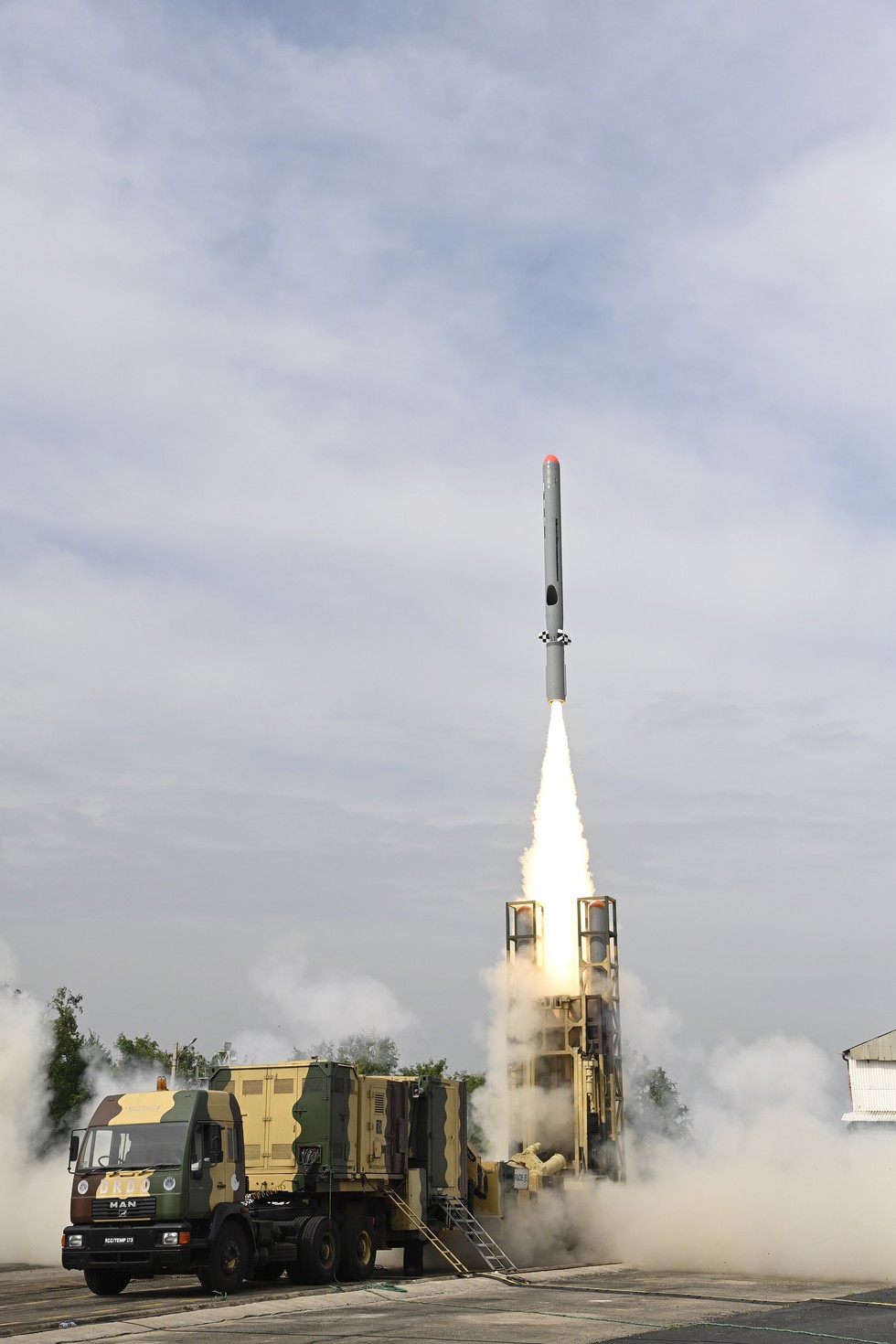
About Long Range Land Attack Cruise Missile:
- It is designed to be launched from both mobile ground-based systems and frontline ships, using a universal vertical launch module, further enhancing its operational flexibility.
- It is also able to execute complex manoeuvres while flying at different speeds and altitudes, showcasing the missile's versatility and precision.
- The LRLACM is equipped with state-of-the-art avionics and software that enhances its performance and reliability.
- These missiles are typically subsonic and can follow terrain-hugging flight paths, making them harder to detect and intercept, thus allowing for a strategic advantage in penetrating enemy defenses.
- Developed by: It is developed by DRDO's Aeronautical Development Establishment in Bengaluru, the LRLACM is the result of collaboration between various DRDO laboratories and Indian industries.
- Bharat Dynamics Limited (BDL) in Hyderabad and Bharat Electronics Limited (BEL) in Bengaluru served as the Development-Cum-Production Partners.
- The Defence Acquisition Council (DAC) had previously approved LRLACM as a Mission Mode Project, sanctioned under the Acceptance of Necessity (AoN) procedure.
- Significance: The missile’s successful test is seen as a key milestone in advancing India's defence capabilities, particularly in the area of long-range precision strikes.
10. Bio-Derived Foam
Researchers from the Indian Institute of Science (IISc) have developed a biodegradable foam that could transform the packaging industry while addressing critical environmental concerns.
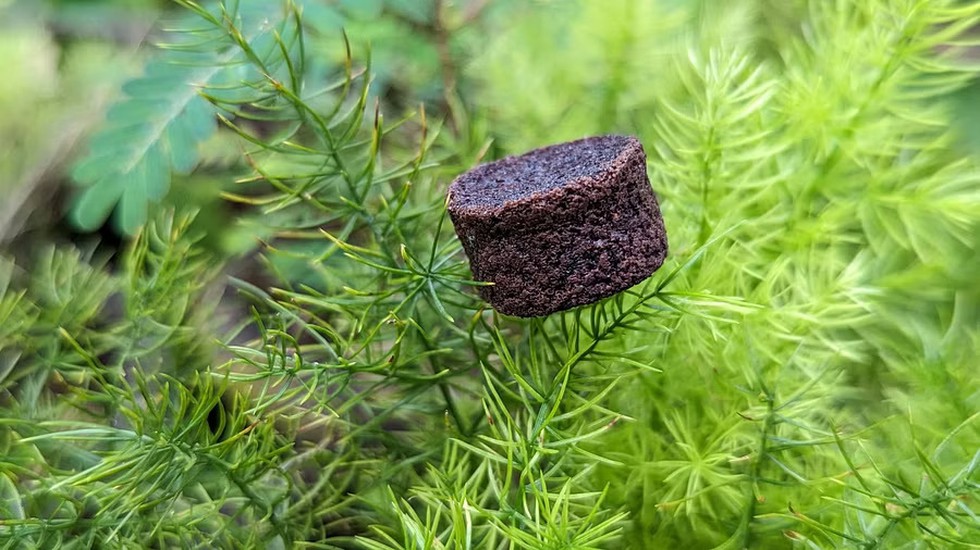
About Bio-Derived Foam:
- Bio-derived foam offers a sustainable alternative to plastic materials used in traditional Fast-Moving Consumer Goods (FMCG) packaging.
- The foam is made from bio-based epoxy resins, non-edible oils approved by the US Food and Drug Administration (FDA) and hardeners derived from tea leaves.
- It offers industries an environmentally responsible alternative to conventional expanded polystyrene (EPS) and polyurethane foam.
- The new foam's unique chemical structure features dynamic covalent bonds that can break and reform under external stimuli. This allows the foams to be mechanically reprocessed or dissolved in eco-friendly solvents without losing strength.
- Unlike conventional packaging materials that persist in landfills for centuries, these bio-foams can disintegrate within three hours when exposed to eco-friendly solvents at 80°C.
- It disintegrates safely in landfills without contaminating groundwater, offering a sustainable alternative to traditional plastic foams.
- Significance: The Indian foam market is currently valued at $7.9 billion and is expected to reach $11.1 billion by 2032, according to an analysis report by Research and Markets.
- With less than 1% of the 2.3 million tonnes of plastic foam produced annually being recycled, this innovation addresses a pressing environmental challenge.


























































































































































.png)
.png)
.png)
.png)
.png)


.png)
.png)
.png)





.png)
.png)






.png)
.png)
.png)
.png)
.png)
.png)
.png)
.png)
.png)

.png)







.png)
.png)


.png)
.png)
.png)


.png)

.png)
.png)





.jpg)

.png)
.png)


.png)

.png)
.png)
.png)

.jpg)

.jpg)


.png)

.png)
.png)
.png)
.png)
.png)
.png)
.png)
.png)
.png)
.png)




.png)

.png)





.png)
.png)
.png)
.png)
.png)
.png)
.png)
.png)
.png)
.png)
.jpg)
.jpg)

.png)
.png)
.png)
.png)
.png)
.png)
.png)
.png)
.png)
.png)
.png)
.png)
.png)
.png)
.png)
.png)
.png)
.png)
.png)
.png)
.png)
.png)



.png)
.png)

.jpg)
.jpg)


.jpg)
.jpg)
.jpg)
.jpg)
.jpg)

.jpg)








.jpg)
.jpg)
.jpg)
.jpg)
.jpg)

















.jpg)
.jpg)







.jpg)


















.jpg)
.jpg)






























































































.jpg)
.jpg)


























.jpg)

.jpg)










.jpg)








.jpg)




.jpg)










.jpg)


















.jpg)












































.jpg)














.jpg)
.jpg)
.jpg)





.jpg)

.jpg)
.jpg)





































































.jpg)


































.jpg)
.jpg)
















































.jpg)












.jpg)


.jpg)




.jpg)
.jpg)
.jpg)

.jpg)
.jpg)
.jpg)
.jpg)

.jpg)
.jpg)
.jpg)

.jpg)
.jpg)
.jpg)
.jpg)
.jpg)
.jpg)
.jpg)
.jpg)

.jpg)


.jpg)
.jpg)
.jpg)
.jpg)
.jpg)
.jpg)
.jpg)
.jpg)
.jpg)
.jpg)











.jpg)
.jpg)





.jpg)
.jpg)
.jpg)
























.jpg)
























.jpg)









.jpg)
.jpg)







.jpg)
.jpg)









































.jpg)
.jpg)
.jpg)
.jpg)
.jpg)

.jpg)
.jpg)
.jpg)
.jpg)
.jpg)


.jpg)
.jpg)
.jpg)
.jpg)
.jpg)

.jpg)
.jpg)
.jpg)
.jpg)
.jpg)
.jpg)
.jpg)
.jpg)
.jpg)
.jpg)
.png)

.png)
.png)

.png)
.png)
.png)
.png)


.jpg)
.jpg)

.jpg)
.jpg)
.jpg)

.png)
.png)
.png)
.png)
.png)
.png)
.png)

.png)
.png)
.png)
.png)
.png)
.png)
.png)
.png)
.png)
.png)





































































-min.png)



.png)




.png)








































